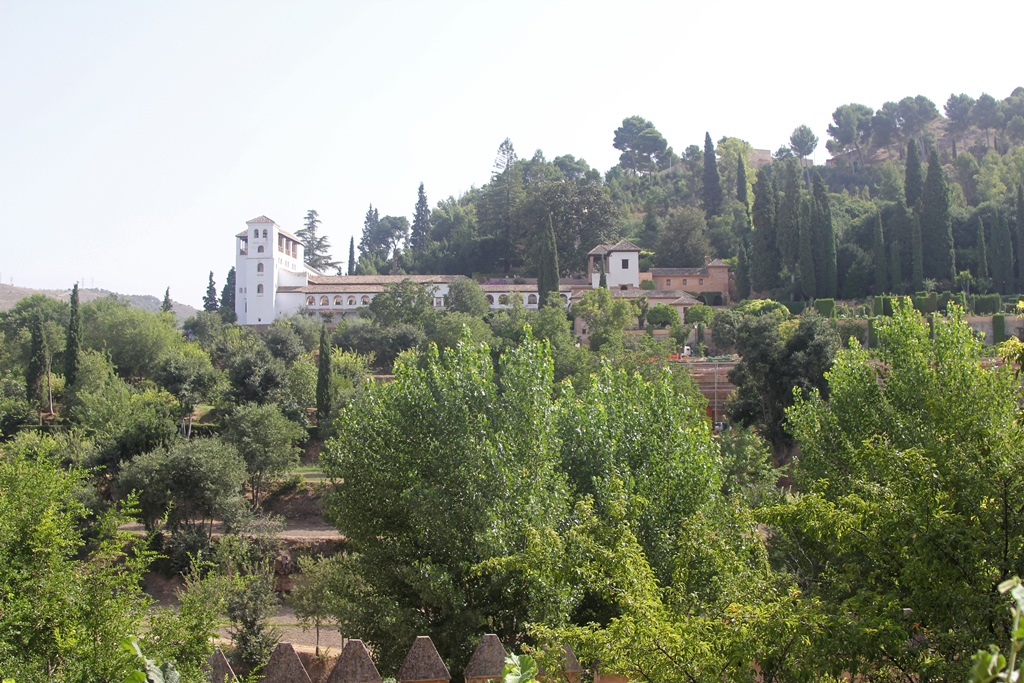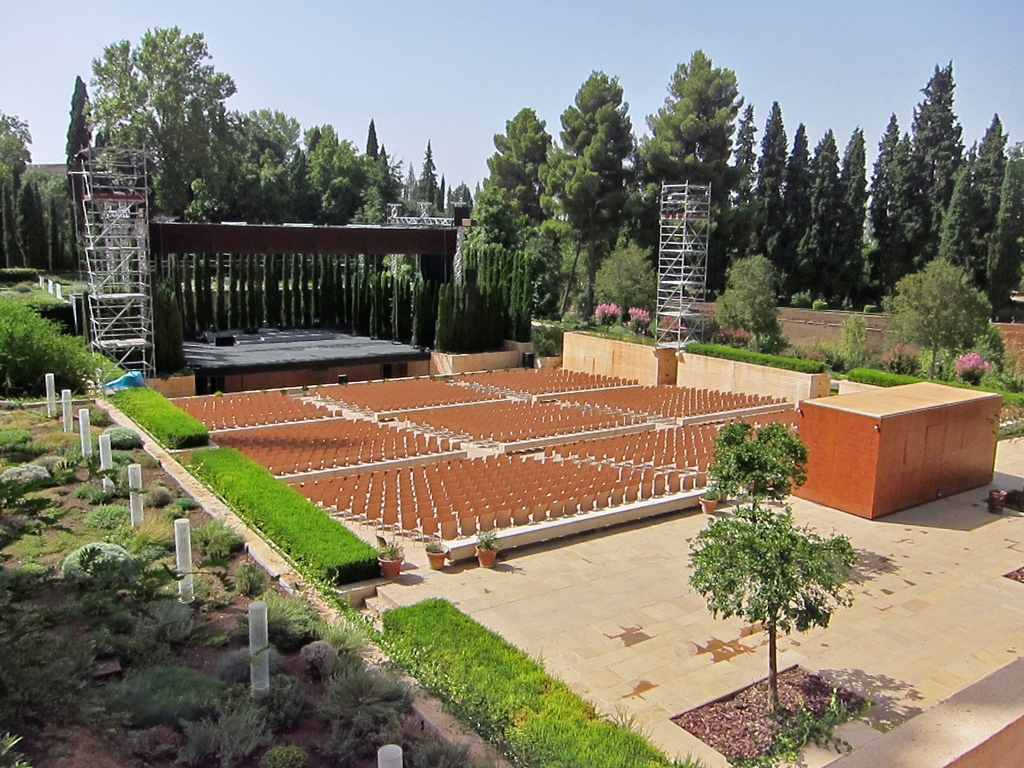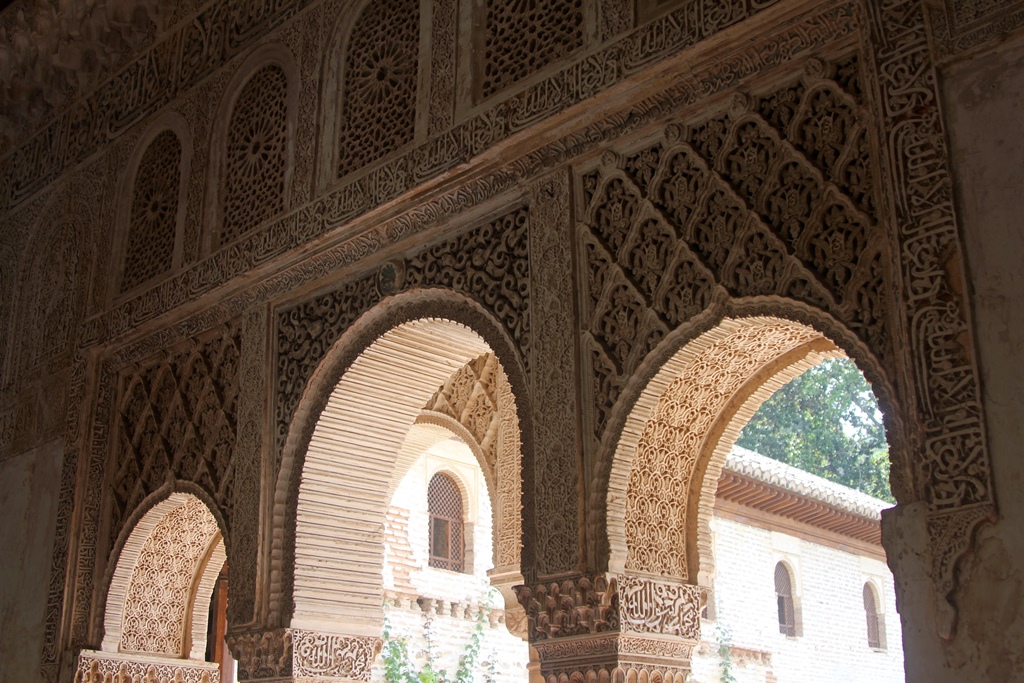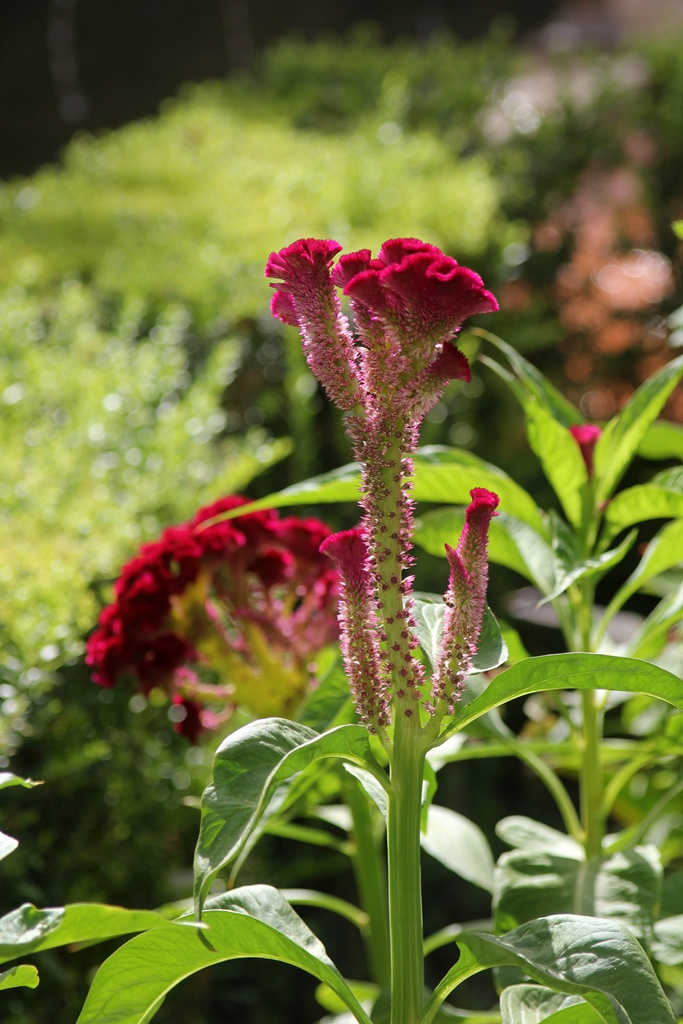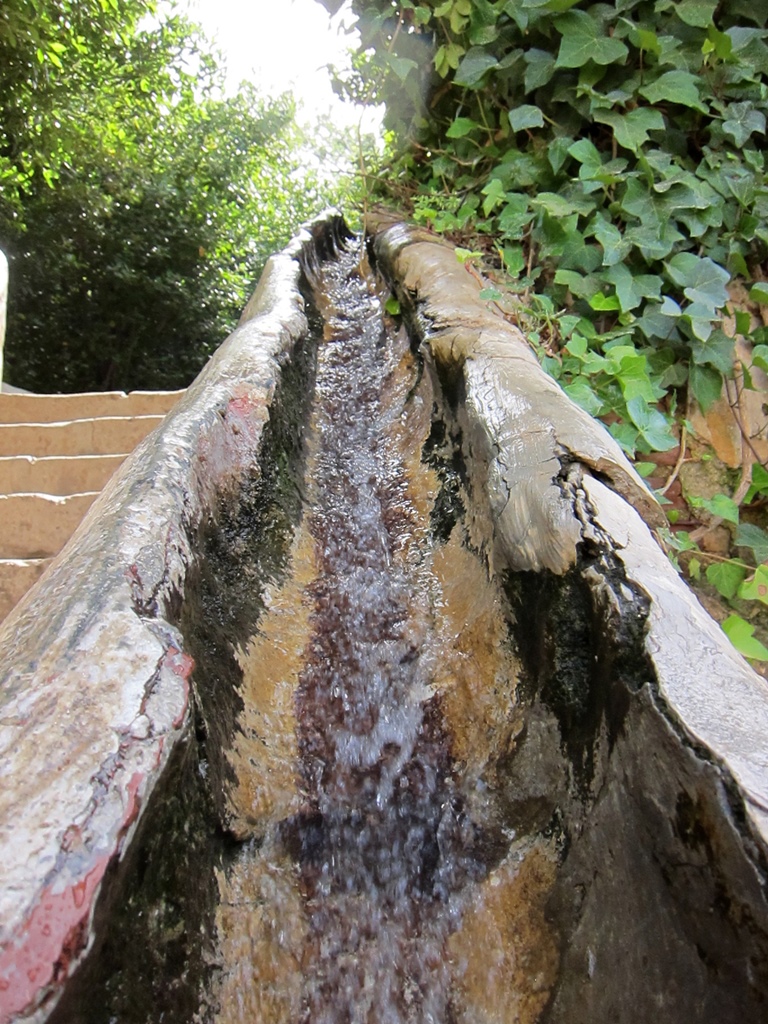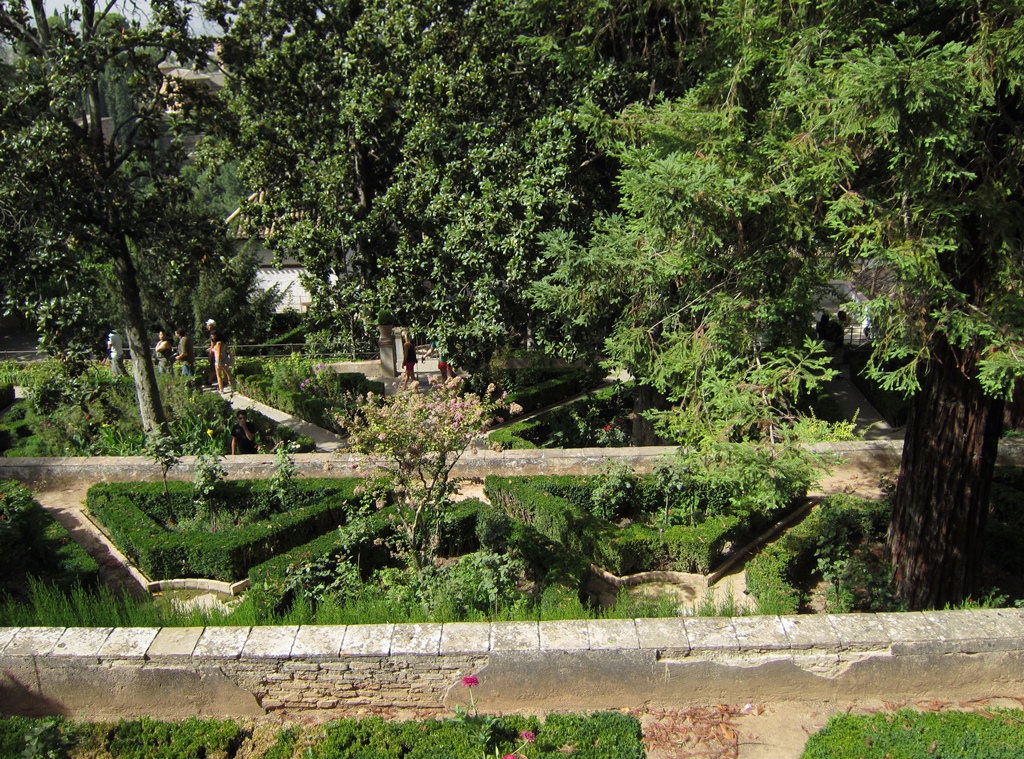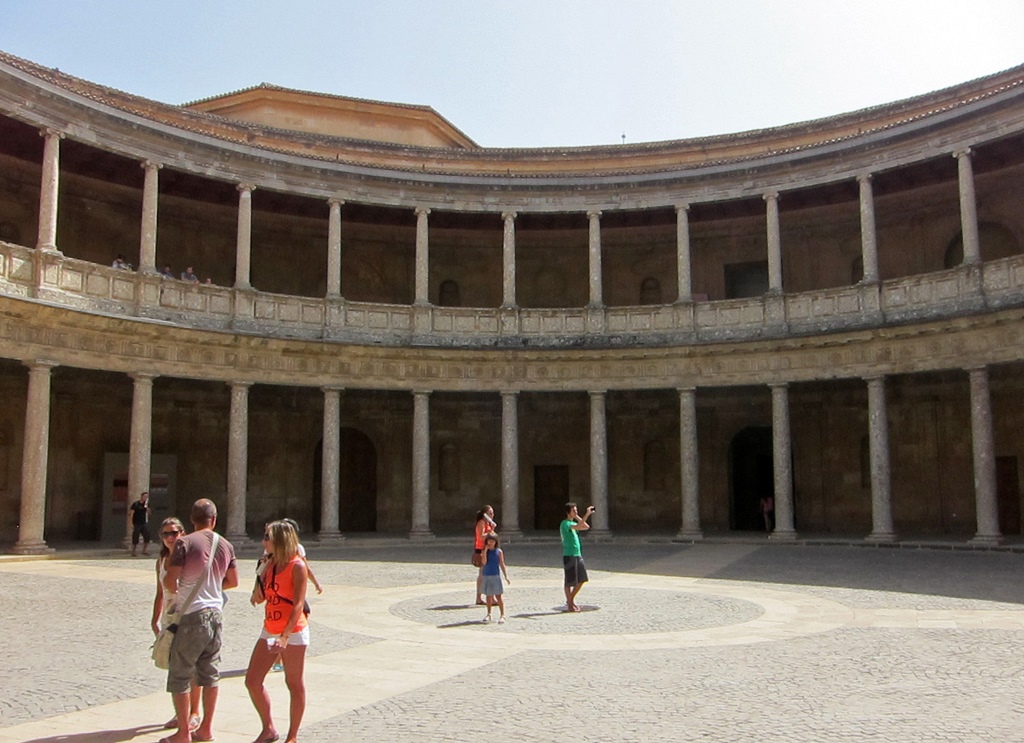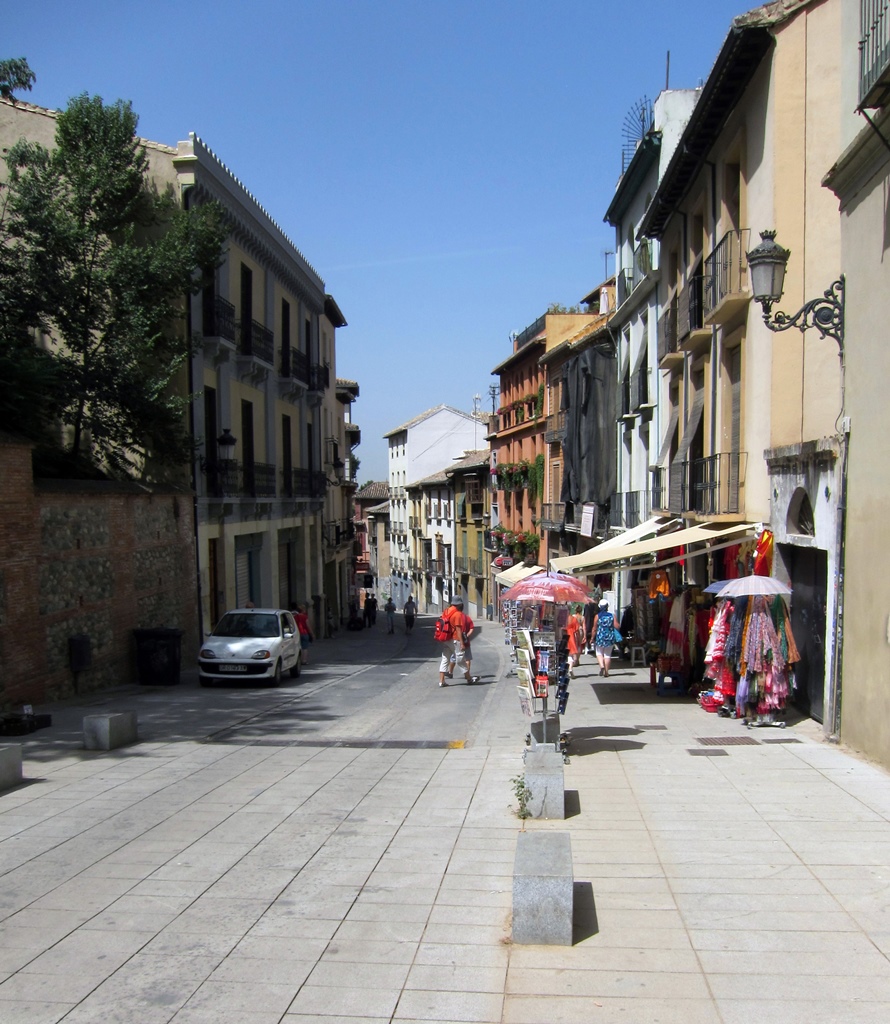The Generalife
The Generalife
is an estate that was constructed by the Nasrids to serve as an escape for
the sultan and his family from the affairs of state. It was mainly constructed in the 14th
Century, and consists of a summer palace, surrounded by extensive gardens. It was built
across a ravine from the Alhambra, on a hill known as the Hill of the Sun. It was distant
enough from the Alhambra to allow for relaxation and leisure pursuits, but close enough that
the sultan could quickly cross over in case of urgent matters needing his attention. At one
time there was a covered walkway connecting the Generalife palace and the Alhambra, but this
has been gone for centuries.
This means that visitors (like us) who wish to visit both palaces have to go the long way
around. This involves following a pathway through the Alhambra grounds that follows the
edge of the ravine. The pathway is nicely landscaped and populated with non-threatening
wildlife. There are also towers along the path that were built to repel invaders. The
towers all have names, and some have acquired legends of their own.
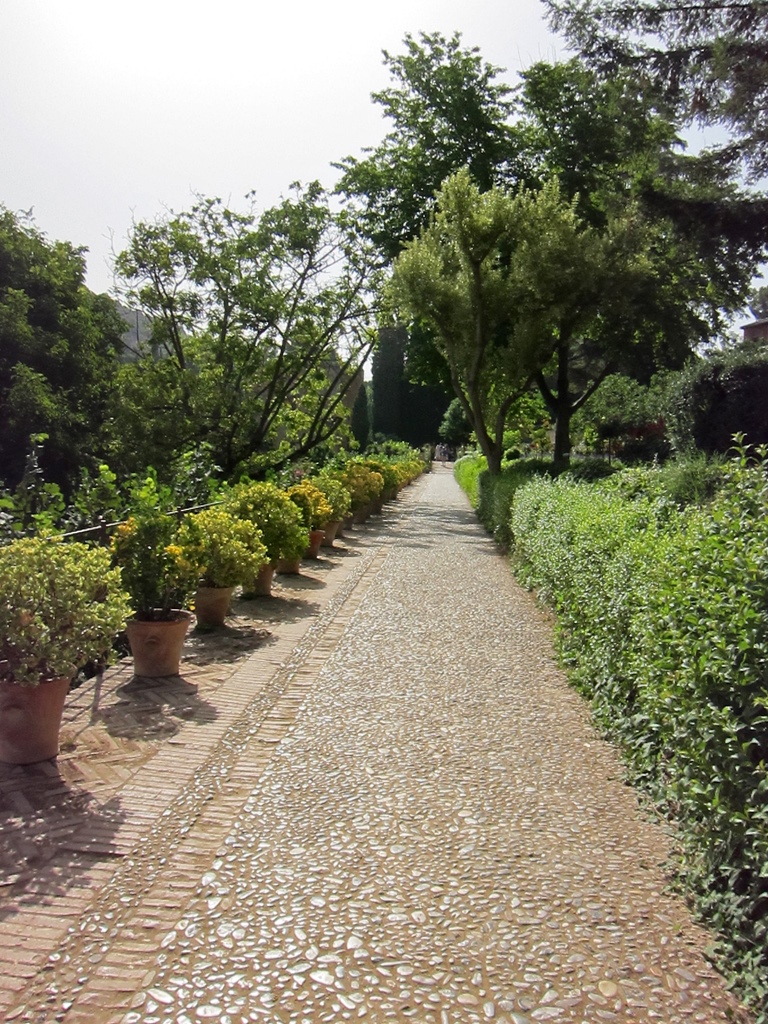
Pathway
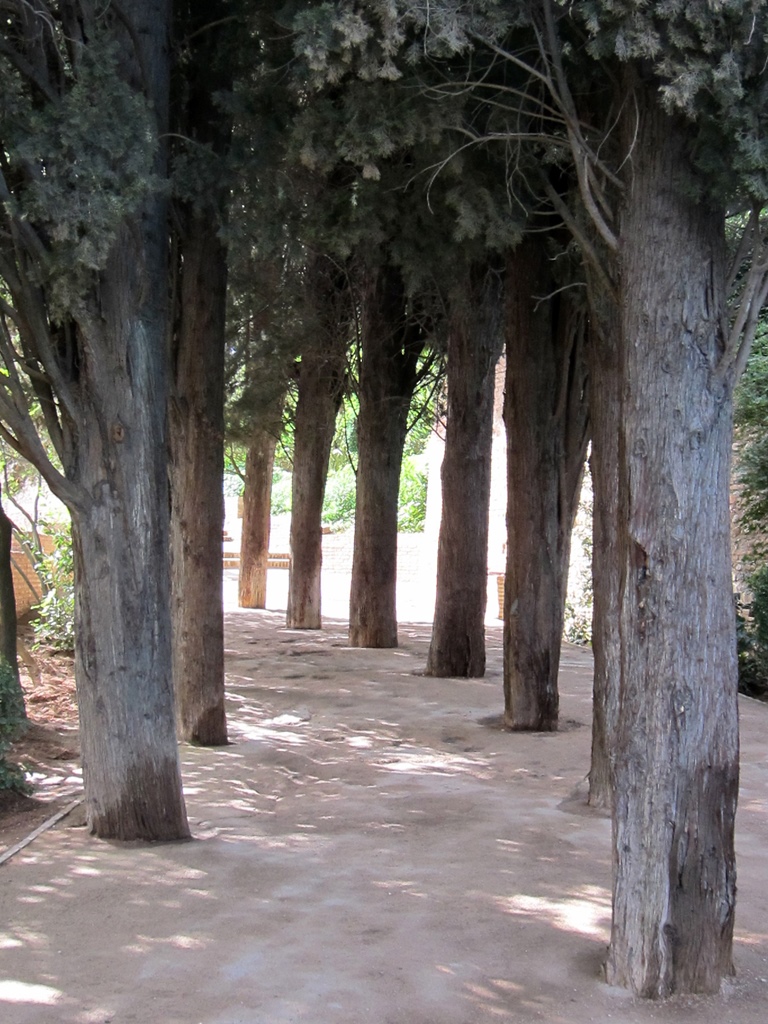
Trees in Path
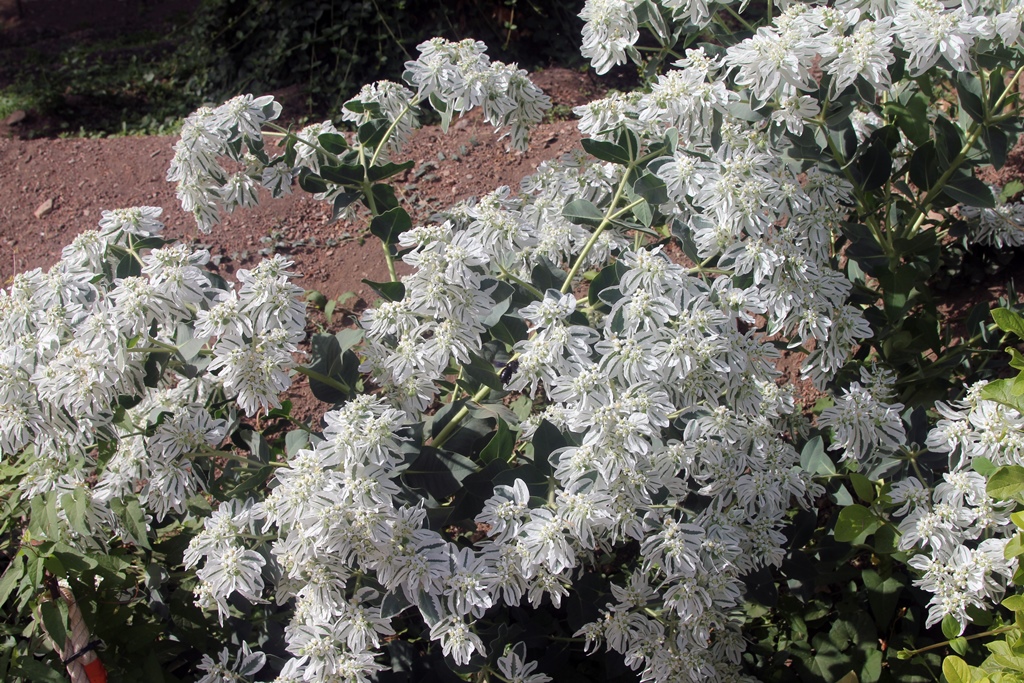
White Flowers
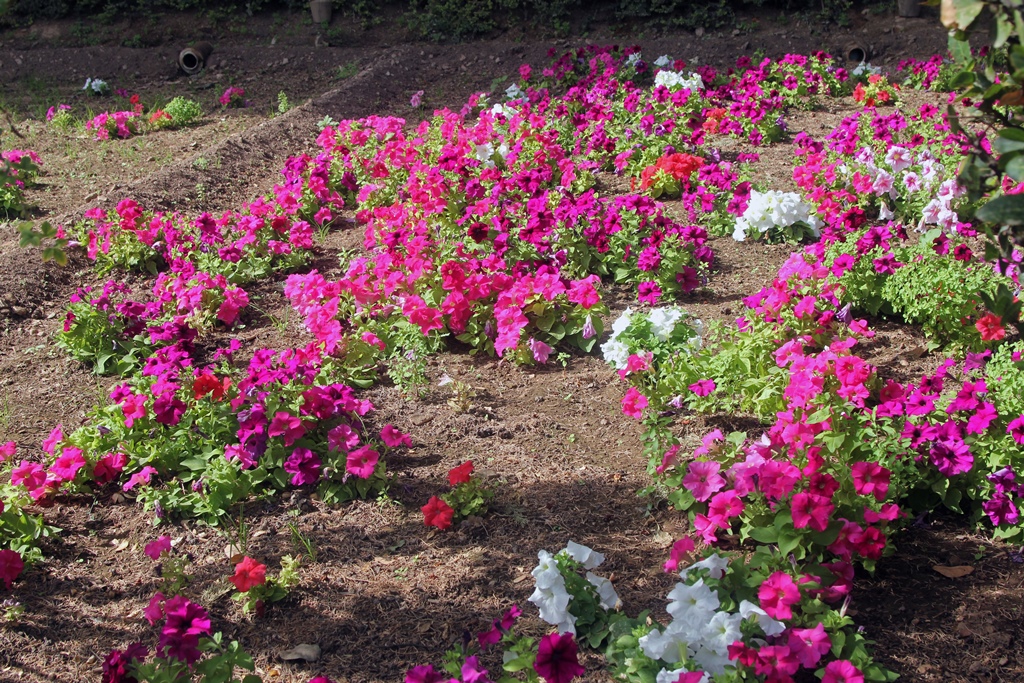
Purple and White Flowers

Camouflaged Predator
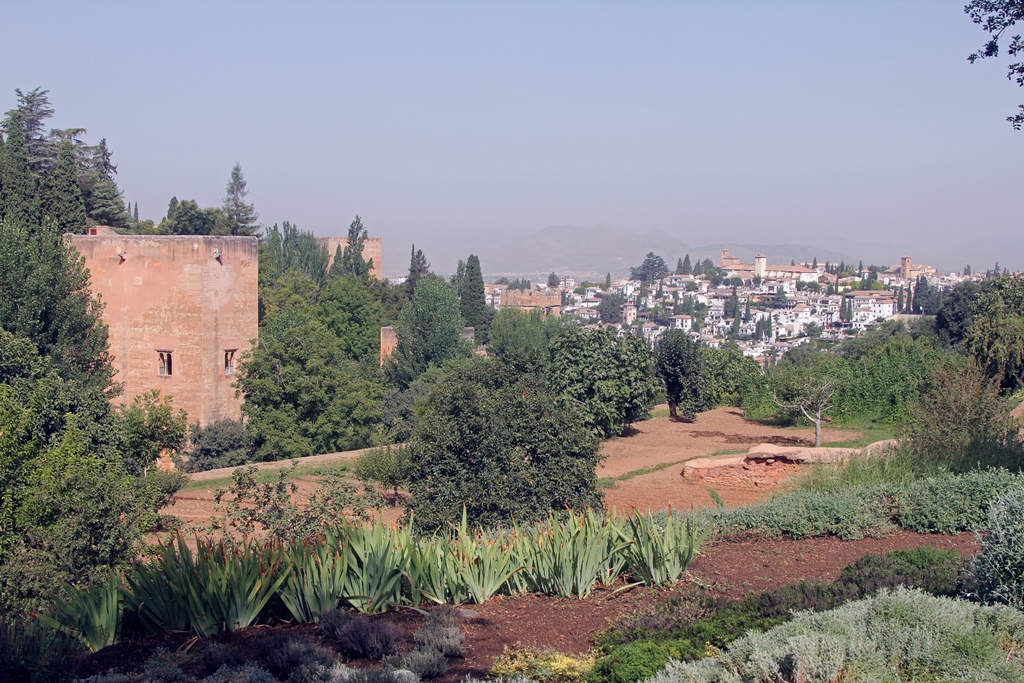
Tower of the Captive Princess and Albaicín Area
At the head of the ravine there is a small stone bridge that crosses what's left of the
ravine and brings the visitor onto the grounds of the Generalife. But before reaching the
anticipated gardens, one encounters a big mood-breaker, in the form of a large,
modern-looking amphitheater. As it turns out, the amphitheater is modern, having
been inaugurated (originally for ballet performances) in 1954 for use in the annual
Festival of Music and Dance of Granada.
Amphitheater
The first gardens are encountered just past the amphitheater. These are called the Lower
Gardens (probably because they aren't as high as the Upper Gardens), and they mostly consist
of long pools with occasional fountains, surrounded by hedges, cypress trees and a variety
of flowering plants. These gardens were only installed in 1931, on land that had long been
neglected, and it is not known whether they bear any resemblance to the gardens that had
occupied the area in medieval times. One would have to think probably not, as even though
they were done in a "Muslim style", this was not based on any reliable representation of
their original configuration. But whether authentic or not, the gardens are undeniably
pleasant.
Philip in Lower Gardens
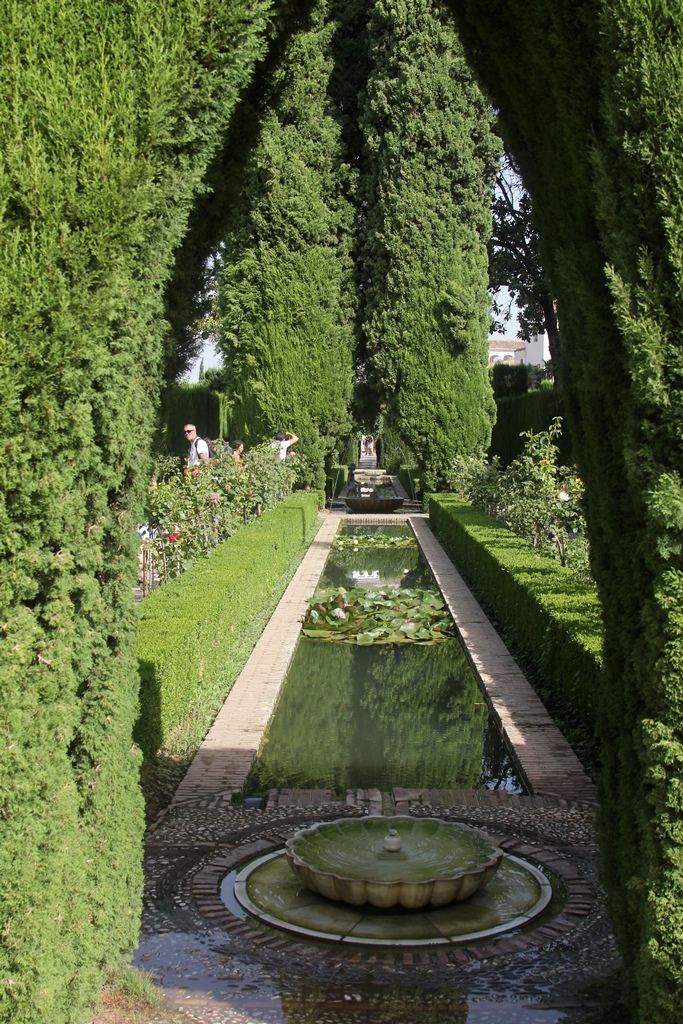
Pools and Fountains, Lower Gardens
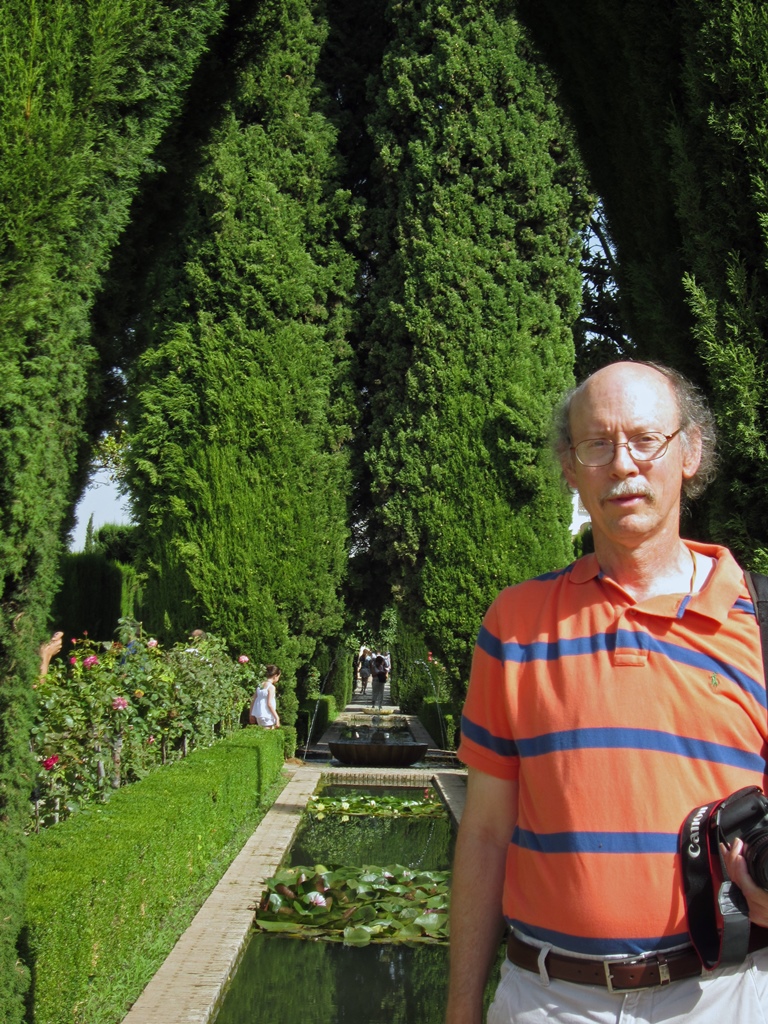
Bob in Lower Gardens
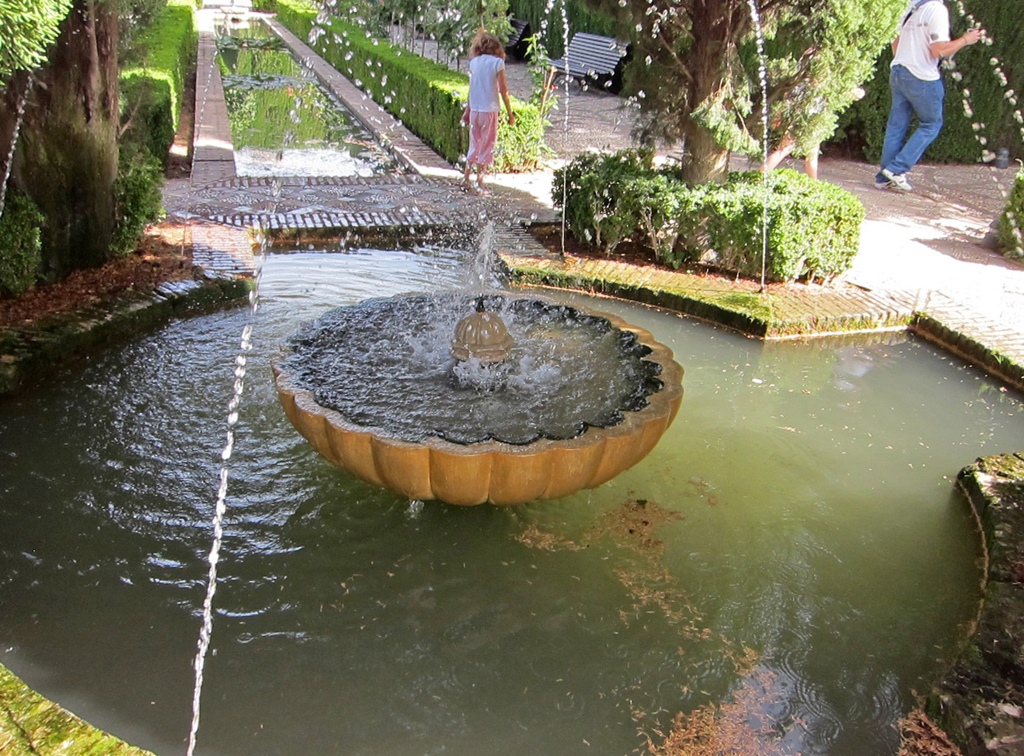
Fountain, Lower Gardens
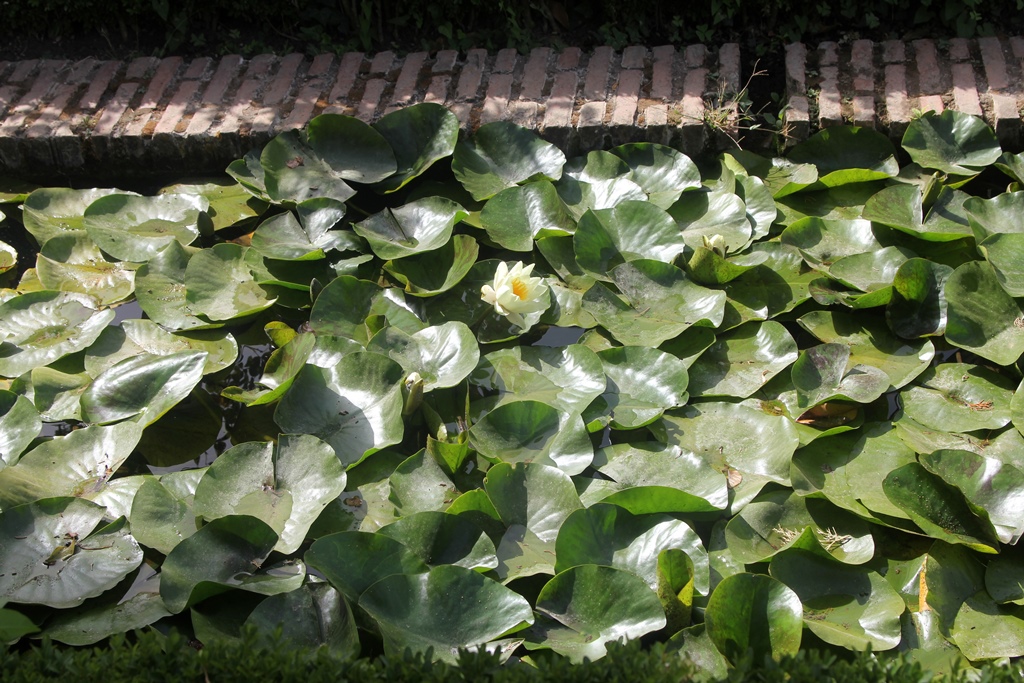
Lilypads, Lower Gardens
One thing that has remained authentic is the terracing of the hillside, which has survived pretty
much intact. The hillside was originally covered with orchards and vegetable gardens. It
remains covered with plants, but again the types of plants may not match the originals. One
thing that can still be enjoyed from the garden is a fine view of the Alhambra, and of Granada's
Albaicín area beyond.

View from Lower Garden, Philip with Fountain
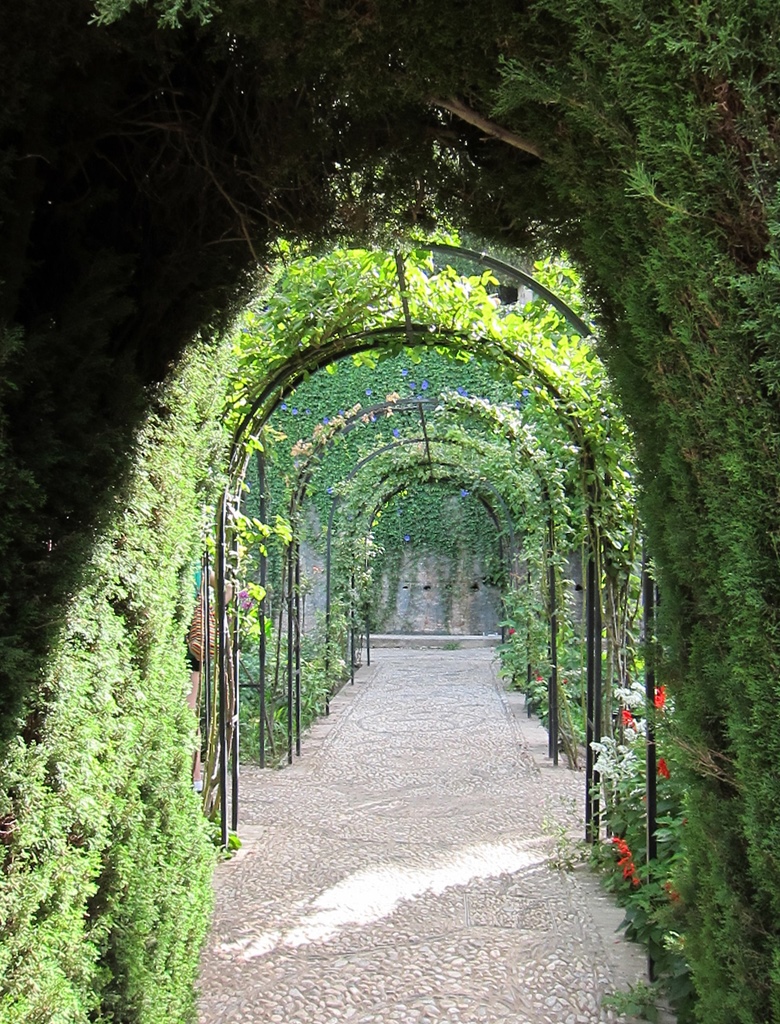
Path Through Lower Gardens
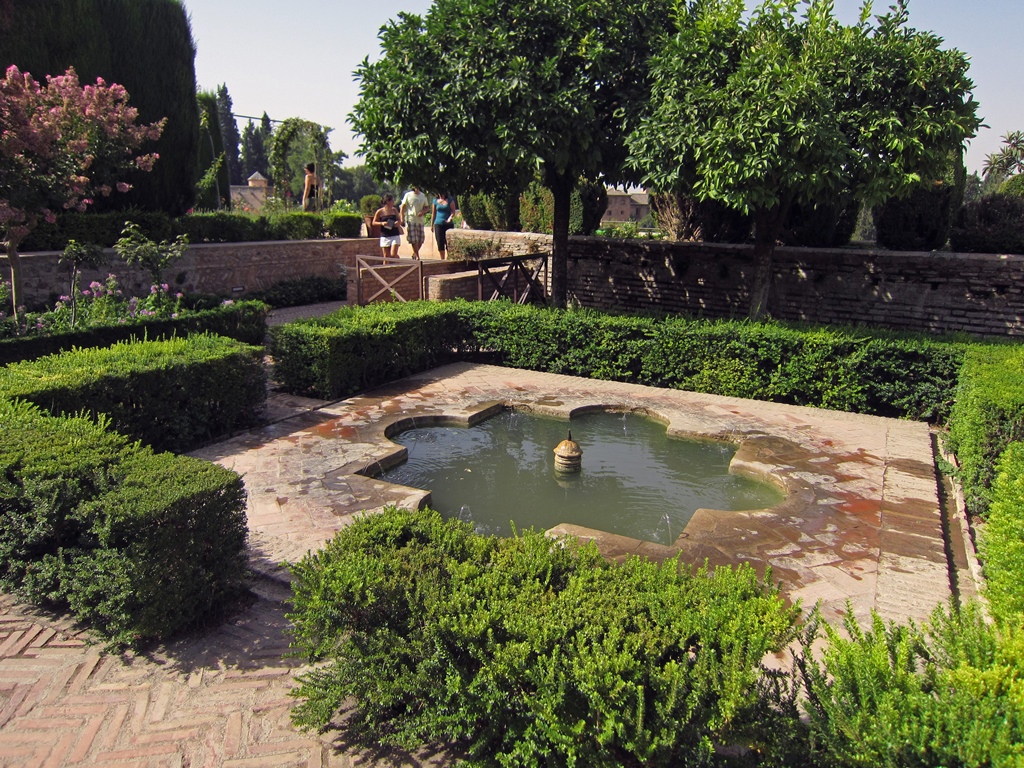
Pool, Lower Gardens
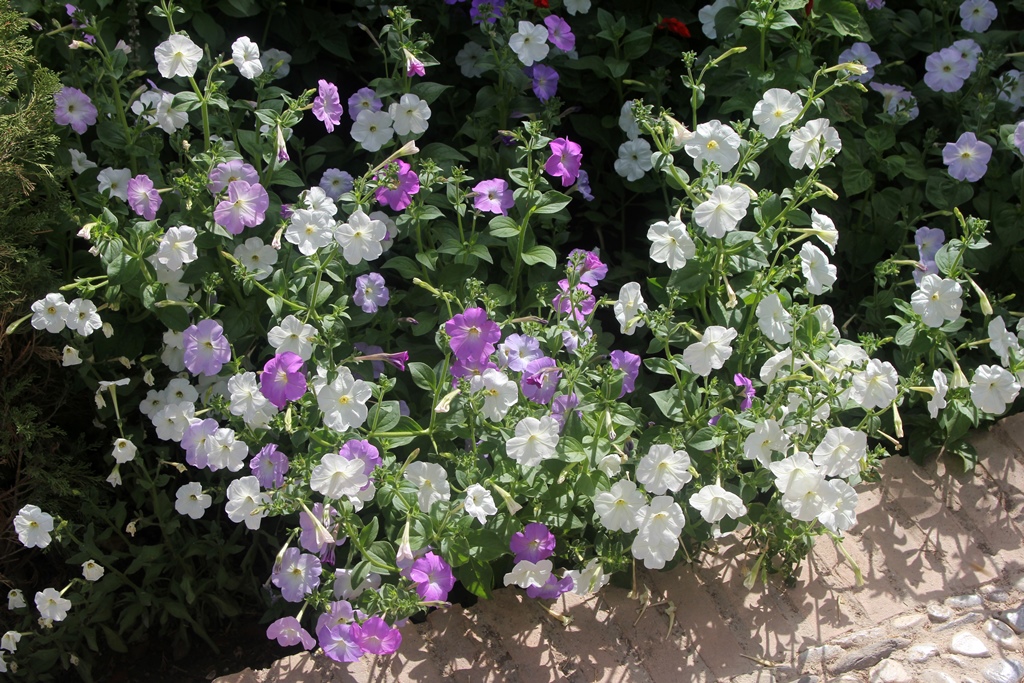
Purple and White Flowers
Eventually the path through the lower gardens reaches the palace, where it enters a small courtyard
called the Dismounting Yard (where visitors would leave their horses) before entering the palace by
way of another small courtyard.
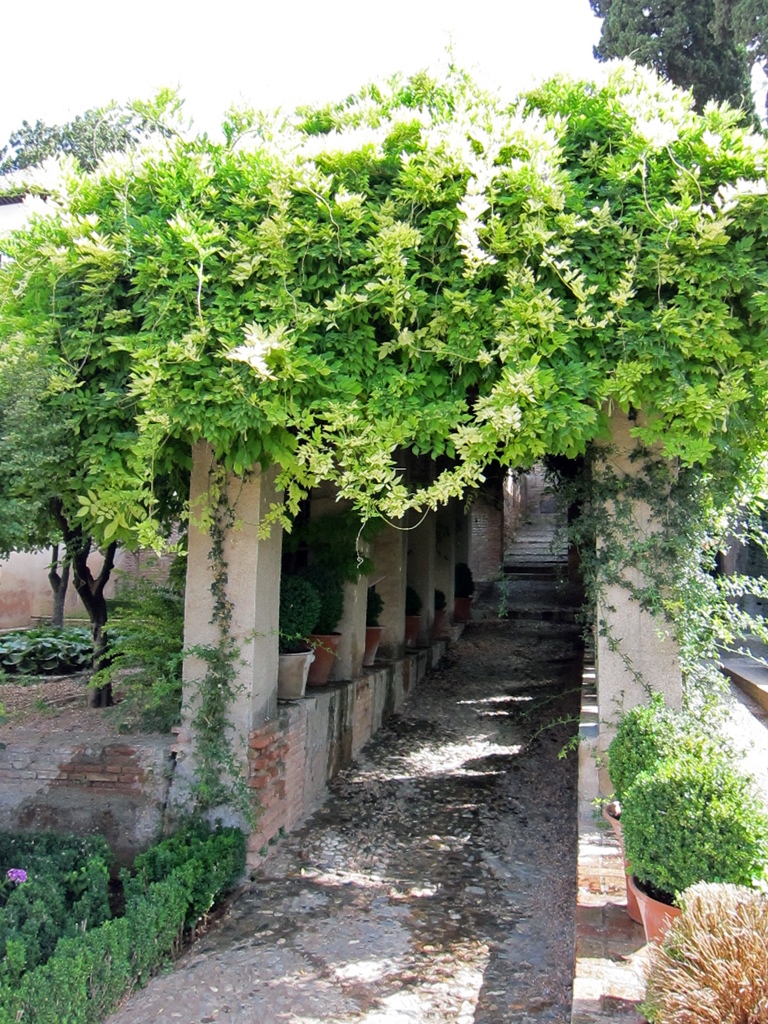
Approaching the Palace
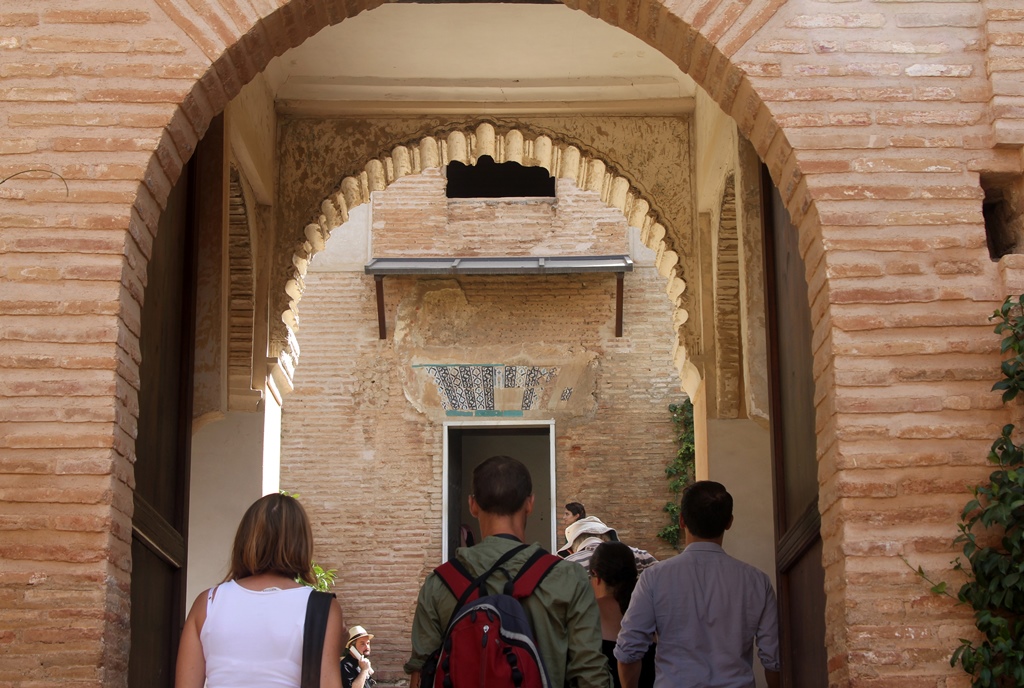
Entry into Palace from Dismounting Courtyard
Passing through a small section of palace brings a visitor into the Water Garden Courtyard,
which is the focal point of the palace. It is also probably the most authentic part, as it
was constructed in 1958 based on the courtyard's original design, which had been discovered
at the time. It consists of a long pool with overarching fountains (probably more than there'd
been in the original design) and many surrounding plants, with a North Pavilion at one end and
a South Pavilion (the part of the palace we'd entered through) at the other.
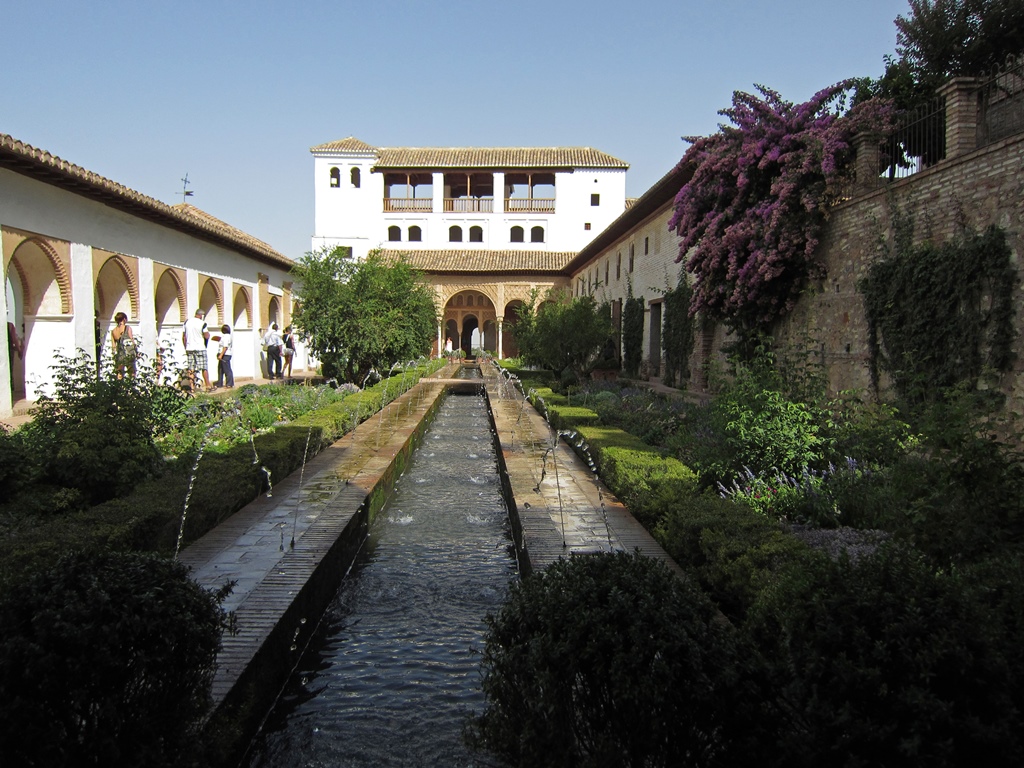
Water Garden Courtyard and North Pavilion
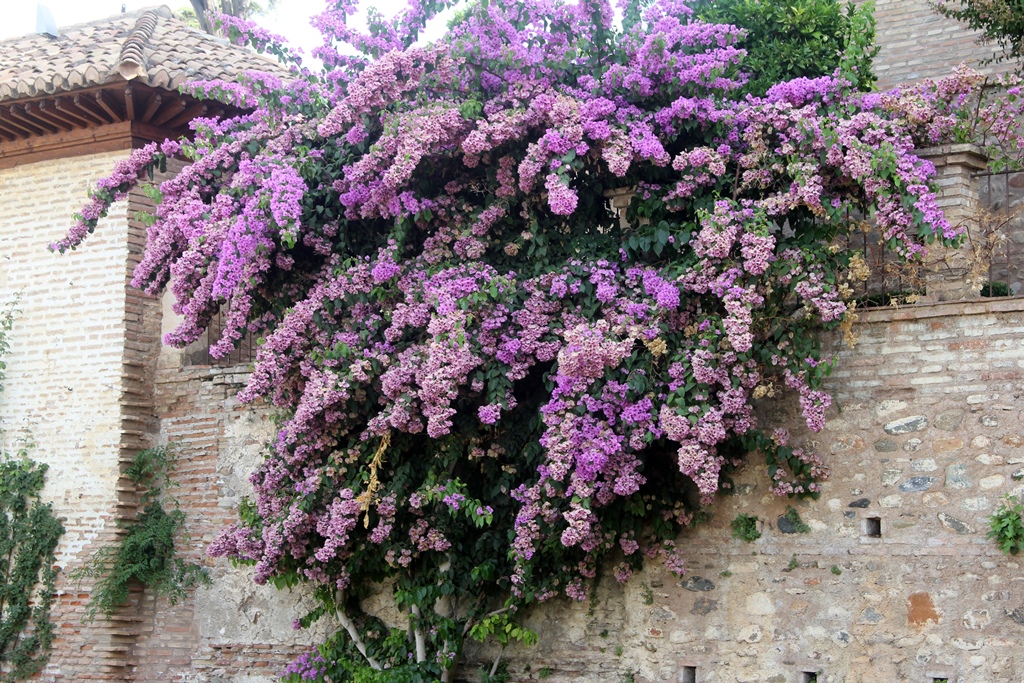
Flowering Tree, Water Garden Courtyard
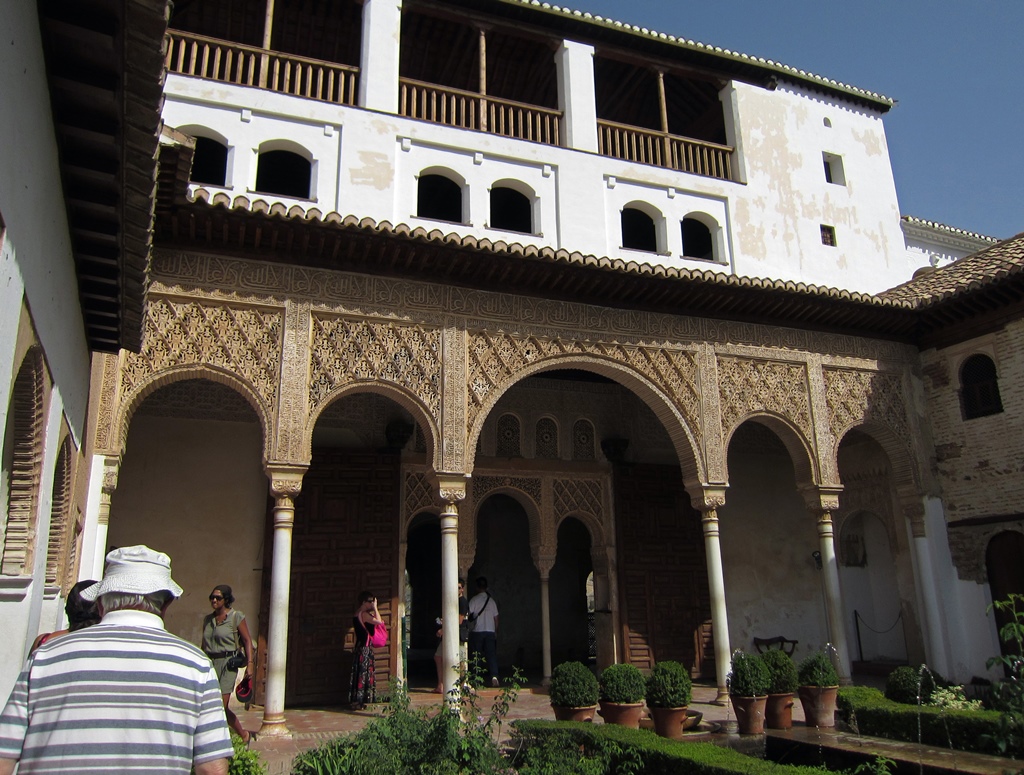
North Pavilion
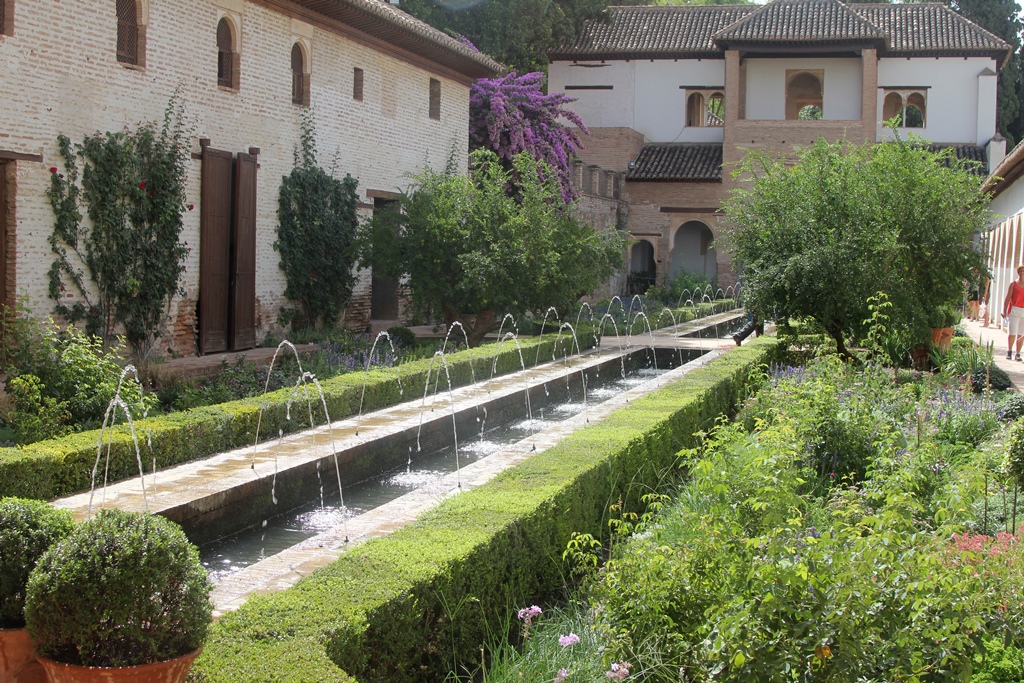
Water Garden Courtyard and South Pavilion
There is also a long arcade parallel to the pool. It is thought that there was originally a
wall enclosing this side of the courtyard, to provide an enclosed intimacy that the Moors
seemed to prefer in their courtyards. There was a windowed enclosure called a mirador
halfway down this wall whose windows supplied the only point in the courtyard from which the
Alhambra could be observed. Shortly after the Moors' departure, the wall was removed and the
open arcade was added on either side of the mirador – apparently the inheriting Christians
didn't value intimacy as much as they liked a great view.
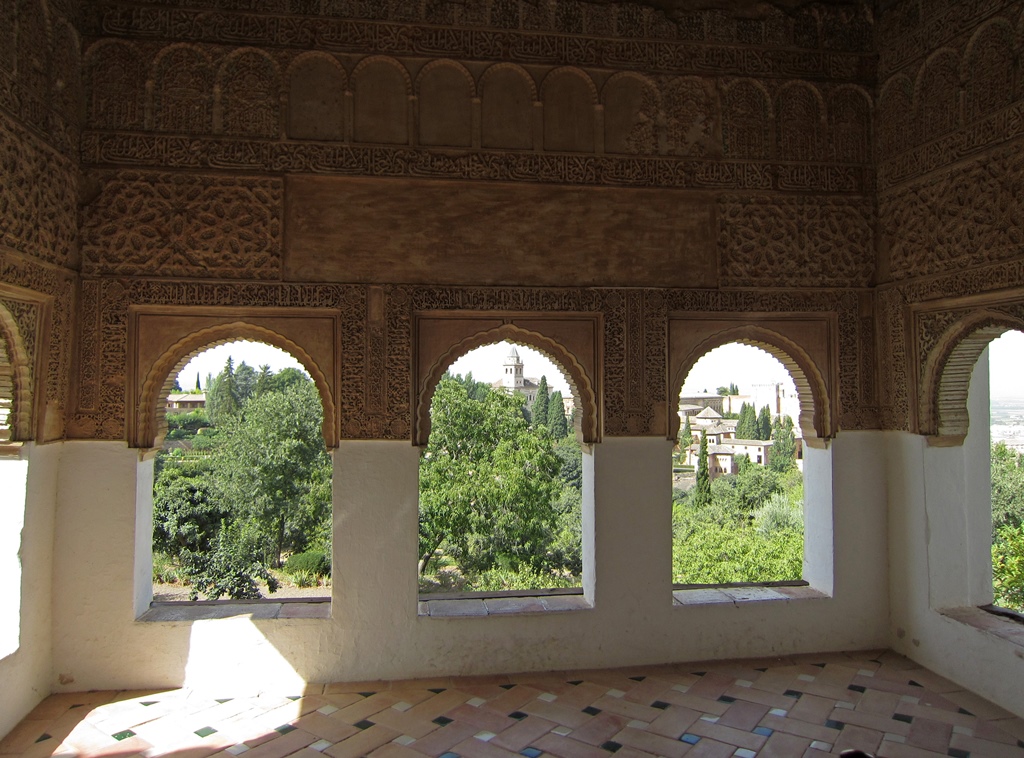
Alhambra from Central Mirador
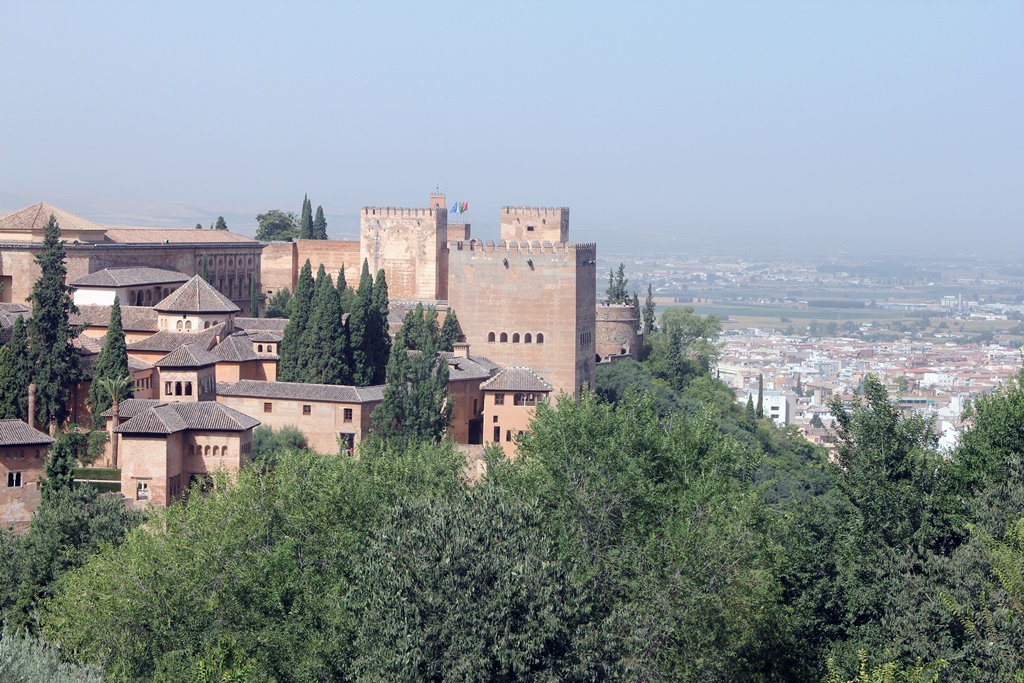
Alhambra from Water Garden Arcade
Walking the length of the courtyard took us into the North Pavilion. The stucco was impressive.
Arches, North Pavilion
Walking the length of the North Pavilion took us to another courtyard, called the Cypress
Courtyard. The Cypress Courtyard is a small, more square-shaped courtyard with a U-shaped
pool, a central fountain, and many beautiful plants. It follows the Muslim ideal of intimacy more
closely than the present Water Garden Courtyard, being surrounded by walls on three sides
and by a rising staircase on the fourth. However, it almost certainly doesn't look like it
did in the Moorish days – an account from the time describes it as being meadowlike, and
makes no mention of any pool. But again, inauthenticity doesn't necessarily make it any
less pleasant.
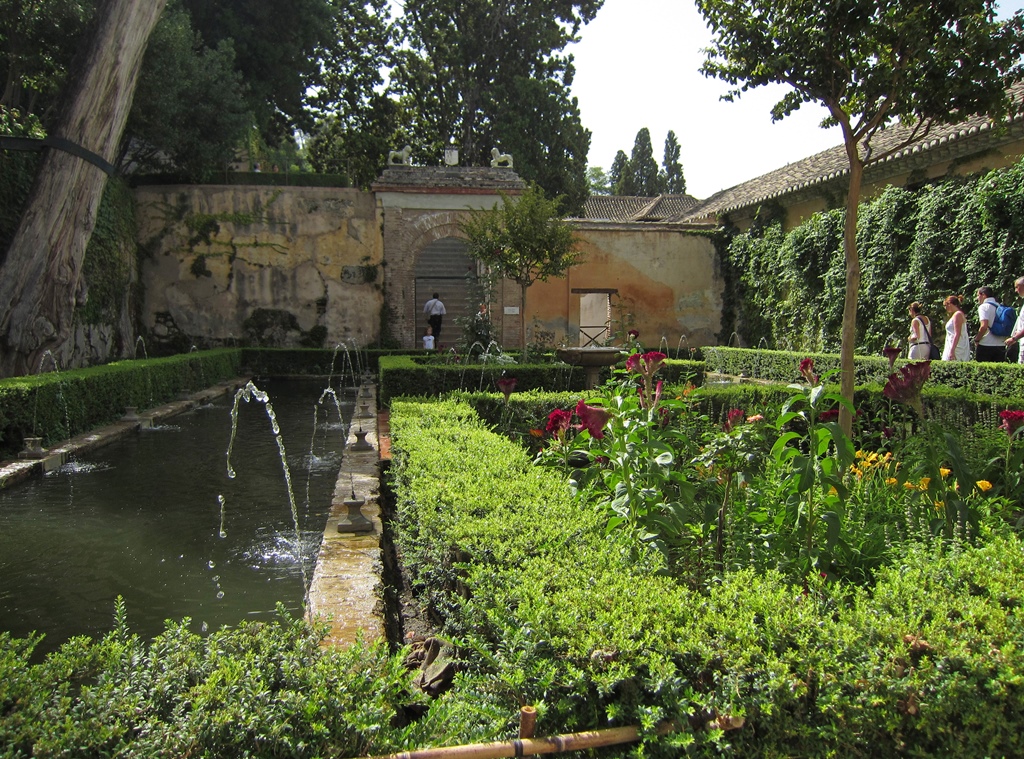
The Cypress Courtyard
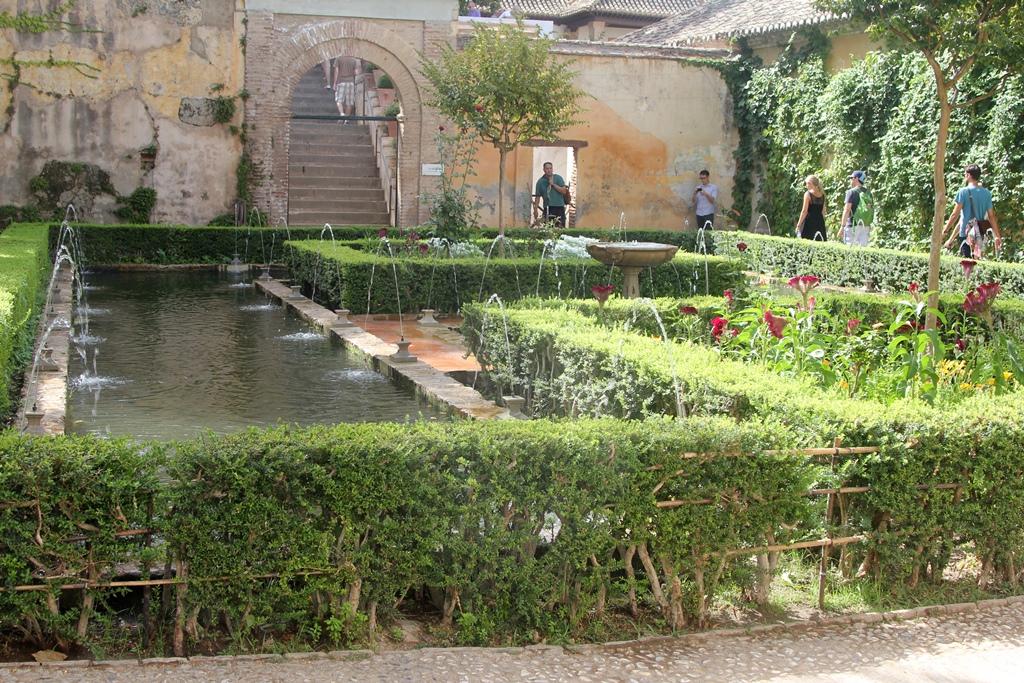
The Cypress Courtyard
Cockscomb, Cypress Courtyard
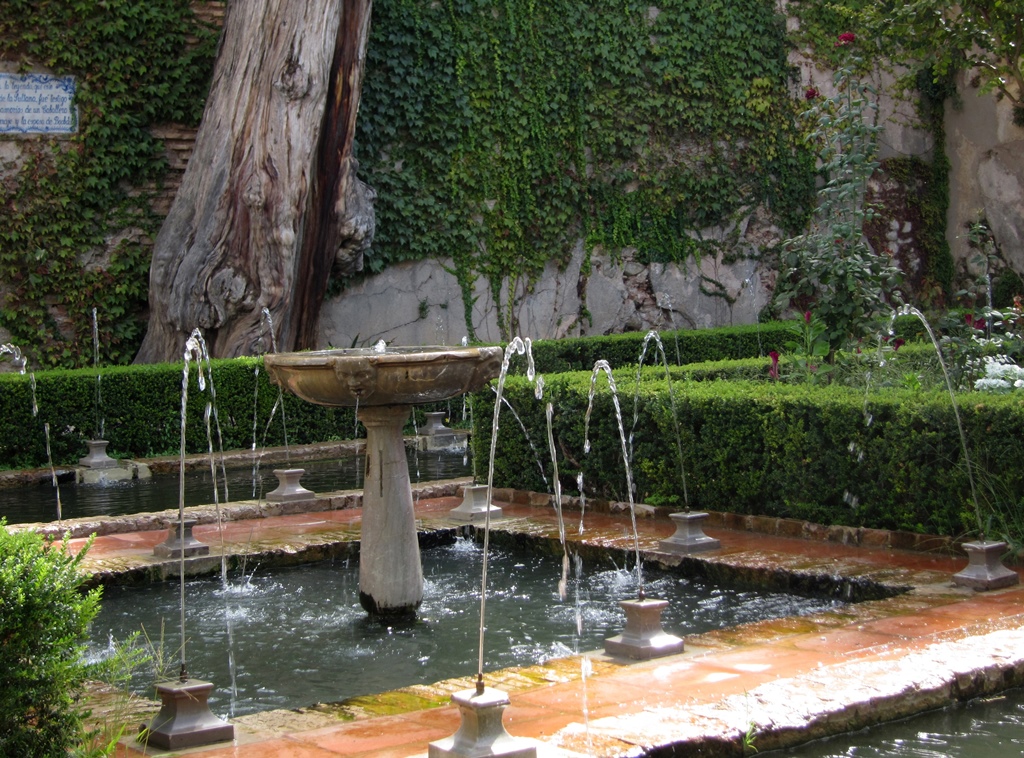
Fountain and Pool, Cypress Courtyard
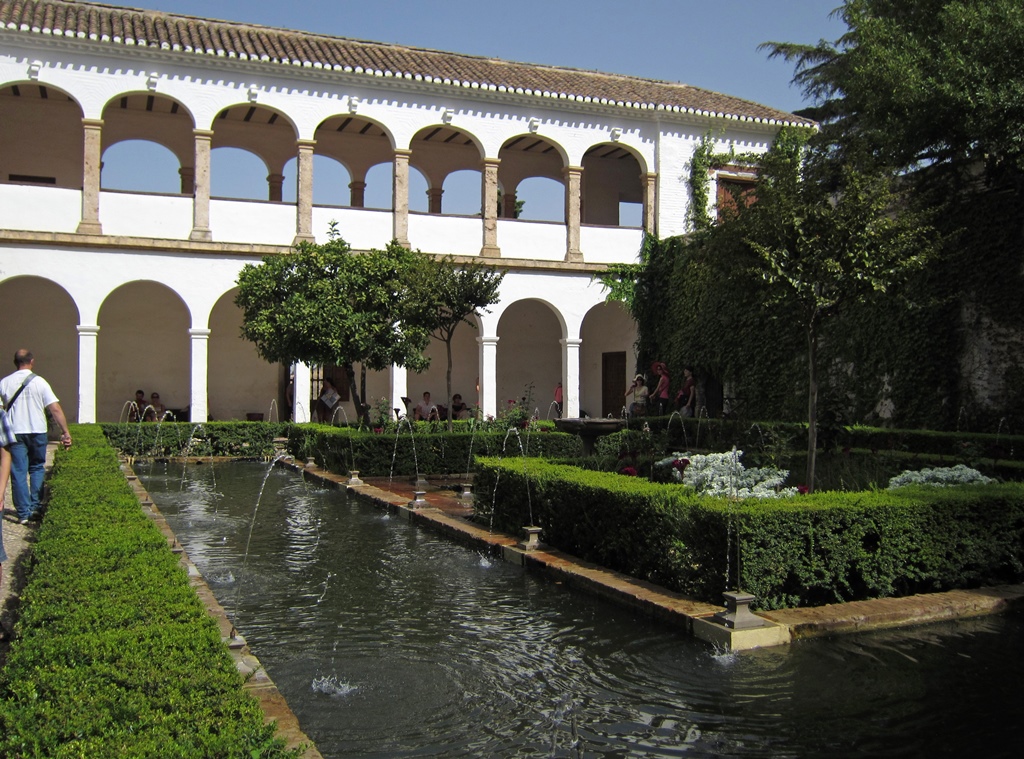
Cypress Courtyard and North Pavilion
There is a legend connected with the Cypress Courtyard, a legend already alluded to in
the Alhambra page. This is the legend
of the Abencerrages family, the family that met an untimely
end when they were butchered in what is now called the Hall of the Abencerrages. According
to the legend, the reason the family had fallen into such disfavor with the sultan was because
one of its members had been found to be having a romantic liaison with the sultana. One
version has the sultana and her paramour arranging trysts in the Cypress Courtyard. For this
reason the courtyard is sometimes called the Sultana's Courtyard. By the way, there is no
evidence to support any of this carrying-on, and it's generally considered to be fiction. But
it's too good a story to ignore.
We exited the courtyard by climbing the stairway. At the top there was an overlook which gave
us a different angle on the courtyard.
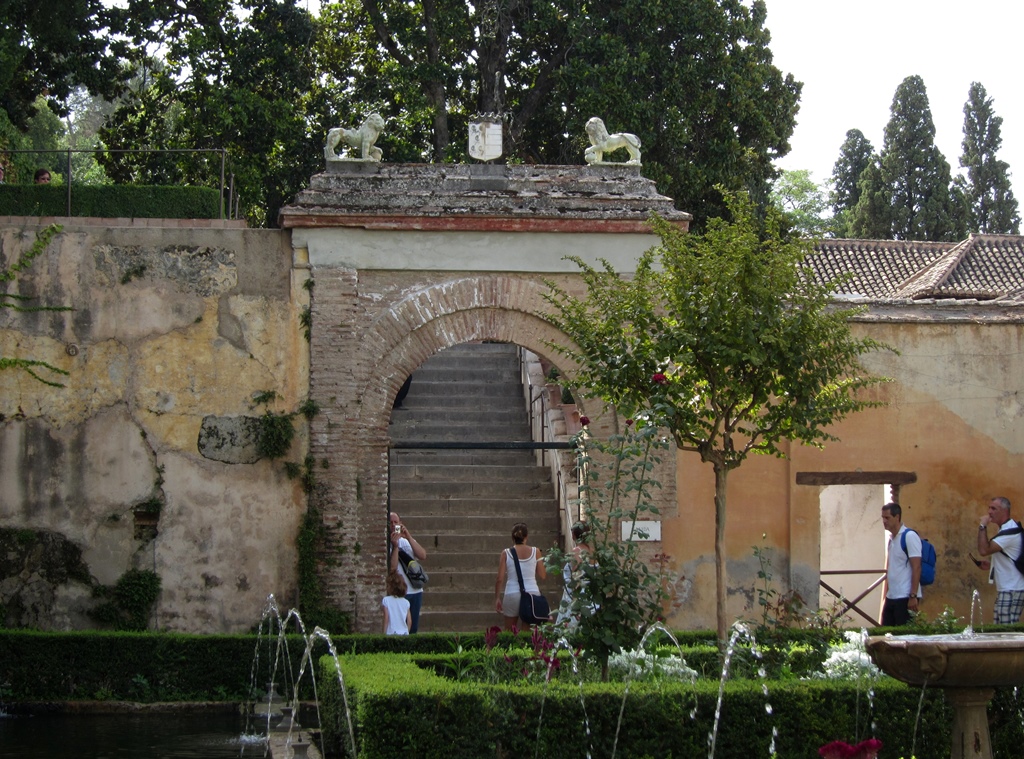
Stairs to Overlook
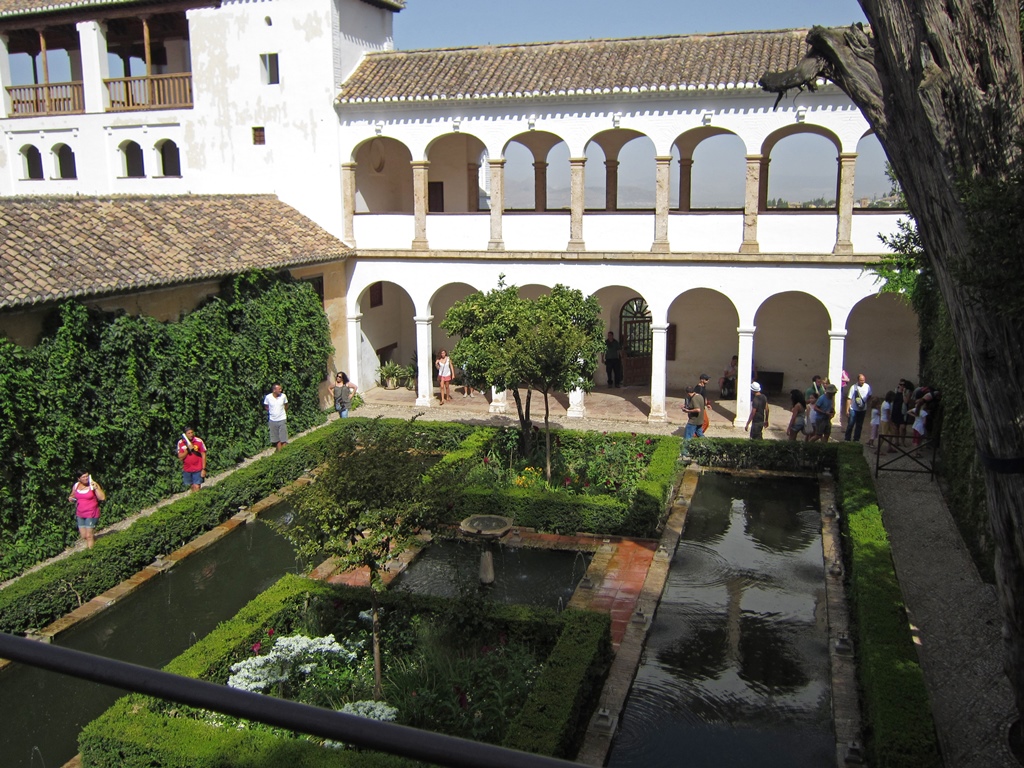
Cypress Courtyard from Overlook
From the area above the Cypress Courtyard, a stairway ascends farther up the hill. This is
called the Water Stairway, as the water stream used to feed the courtyards below is incorporated
into the stairway's handrail. This is an original Moorish feature.
Handrail, The Water Stairway
The Water Stairway took us up into an area of more gardens, called (as you may have guessed)
the Upper Gardens. These gardens would have to be considered more European in style than
Moorish.
The Upper Gardens
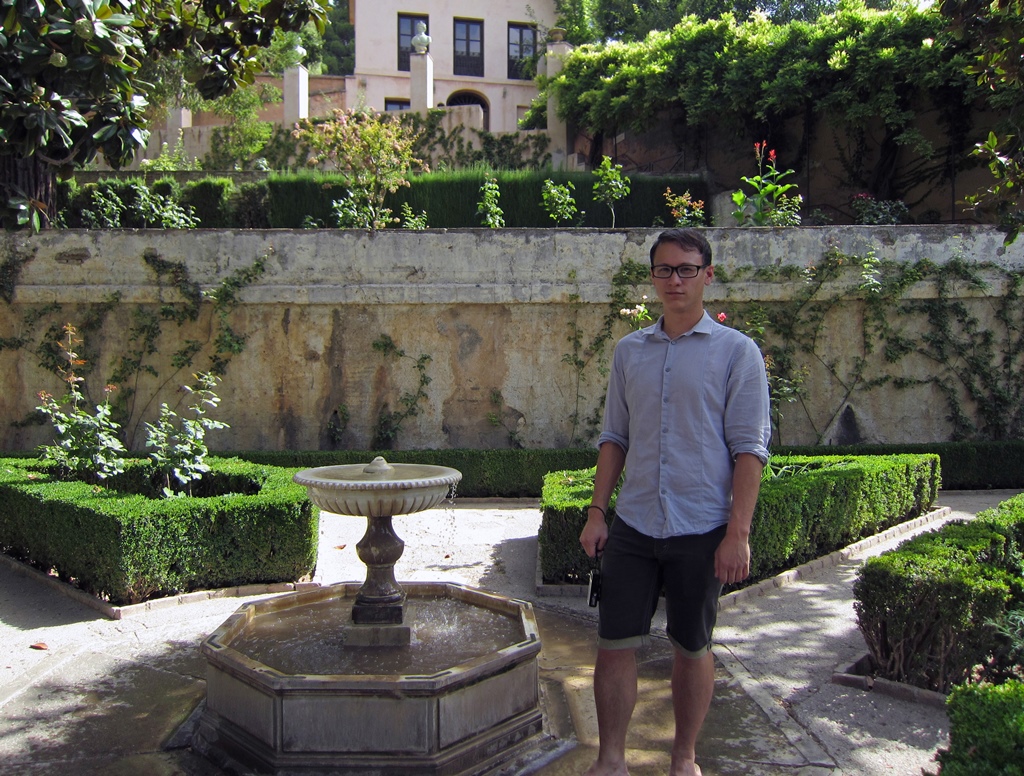
Philip and Fountain, Upper Gardens
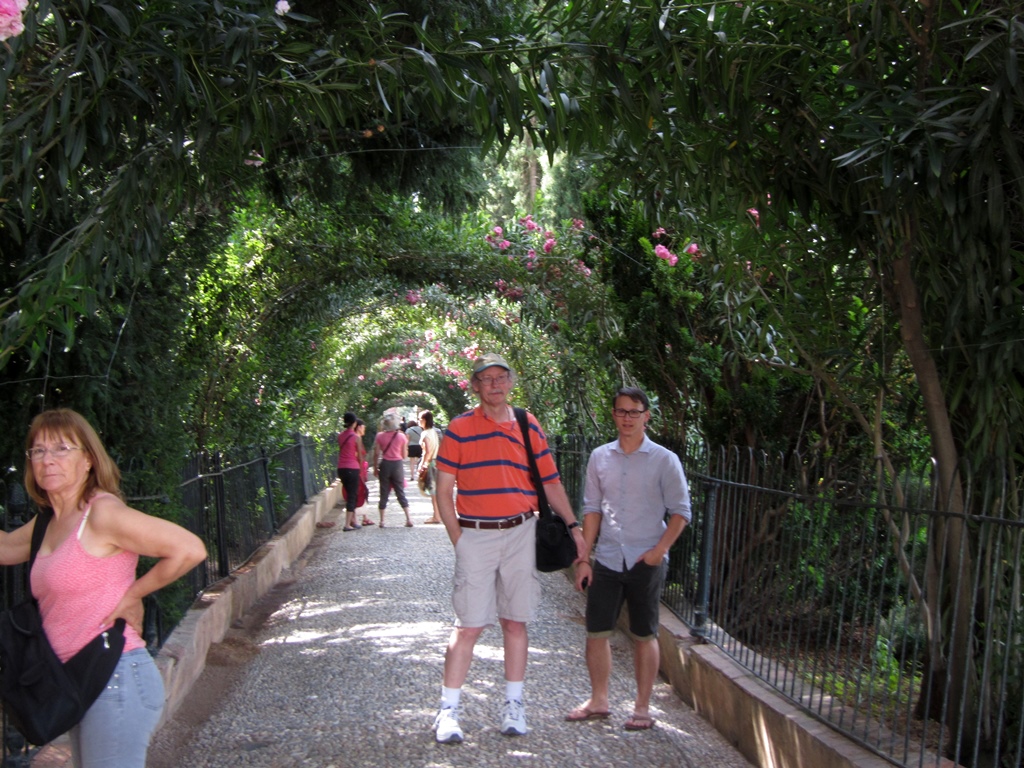
Bob and Philip, Upper Gardens
Walking through the Upper Gardens eventually took us back past the amphitheater and out of
the Generalife grounds. We planned on exiting the Alhambra complex the way we'd come in,
through the Justice Gate, and we headed back that way, through the Alhambra grounds. The
path took us through a cypress-lined stretch called the Cypress Walk, and past the excavated
foundations of a large building. This building was at one time another palace, called the
Palace of the Abencerrages, built in the 13th-14th Century. Apparently the palace had
survived both the Nasrids and the Reconquista, but it did not survive the occupying
soldiers of Napoleon Bonaparte, who blew it up early in the 19th Century.
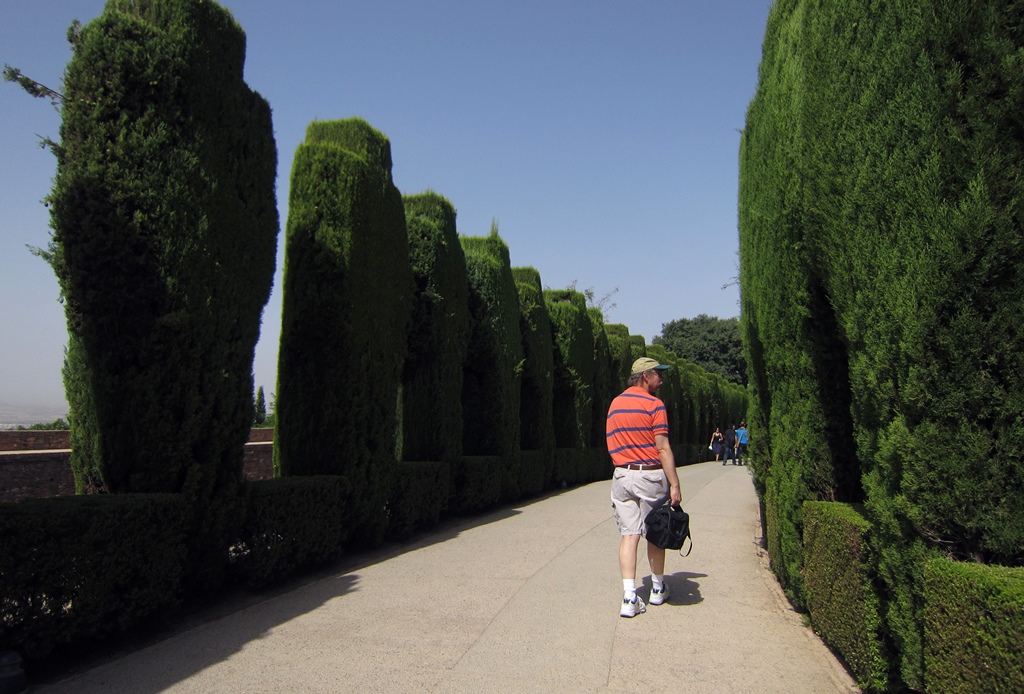
Bob on Cypress Walk Back to Alhambra
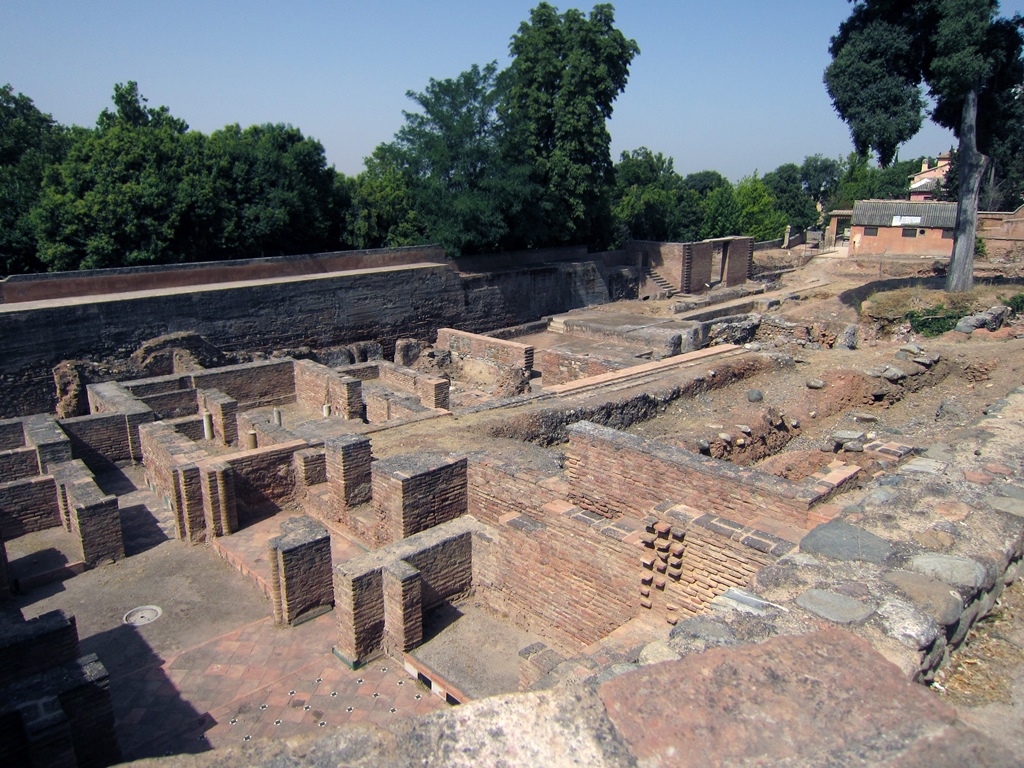
Foundation, Palacio de los Abencerrajes
Before exiting the grounds, we passed by the Palace of Charles V and went over to get a closer
look. The palace was built in the 16th Century at the direction of King/Emperor Charles to
provide a palace that catered better to Christian sensibilities and administrative needs. It
was mostly built over an old Christian quarter, and did not involve the wholesale destruction
of Moorish palaces, which Charles was actually interested in preserving. The palace was built
in the then-popular Renaissance style, with accents like gigantic iron rings and commemorative
reliefs. The building is huge and square, with a circular courtyard. We entered the courtyard
long enough to take some pictures and then departed.
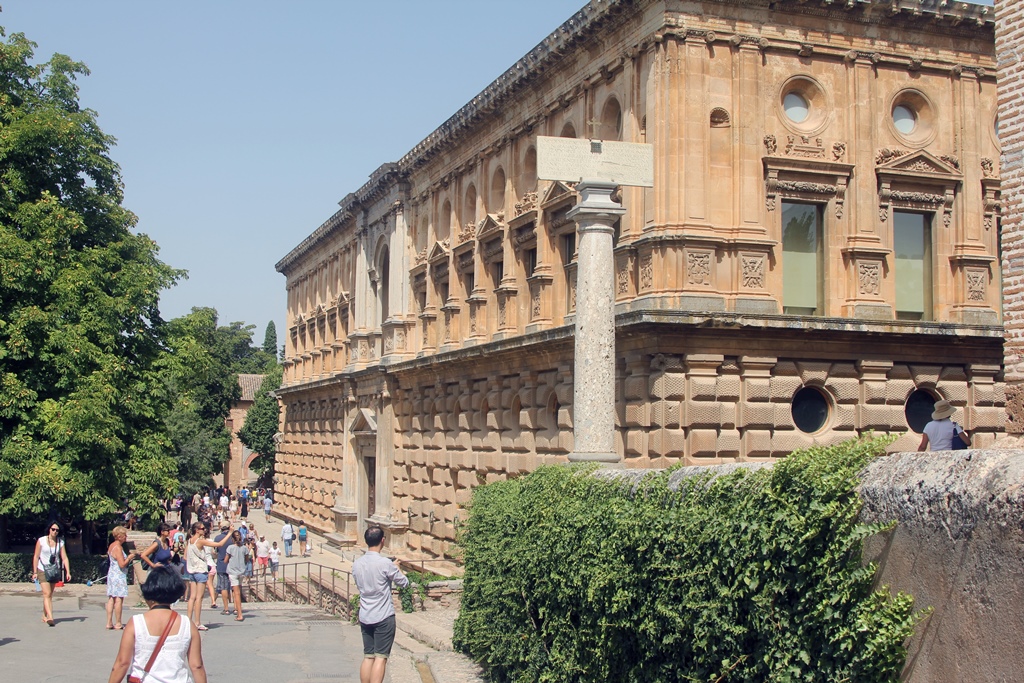
Approaching Palace of Charles V
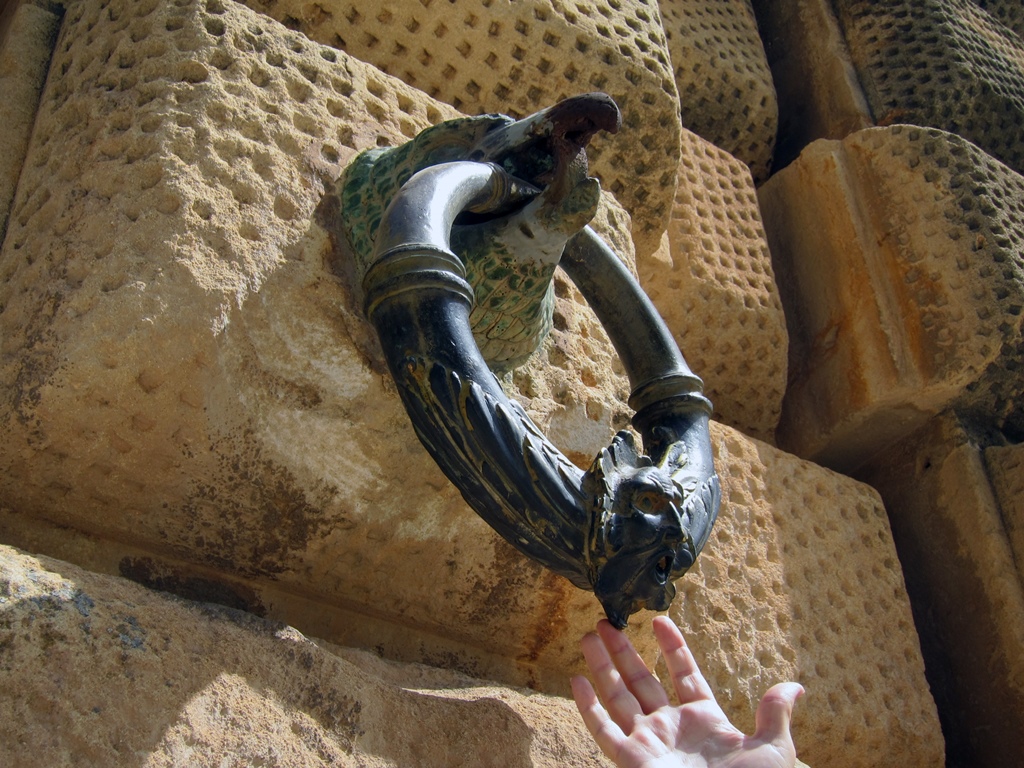
Giant Ring
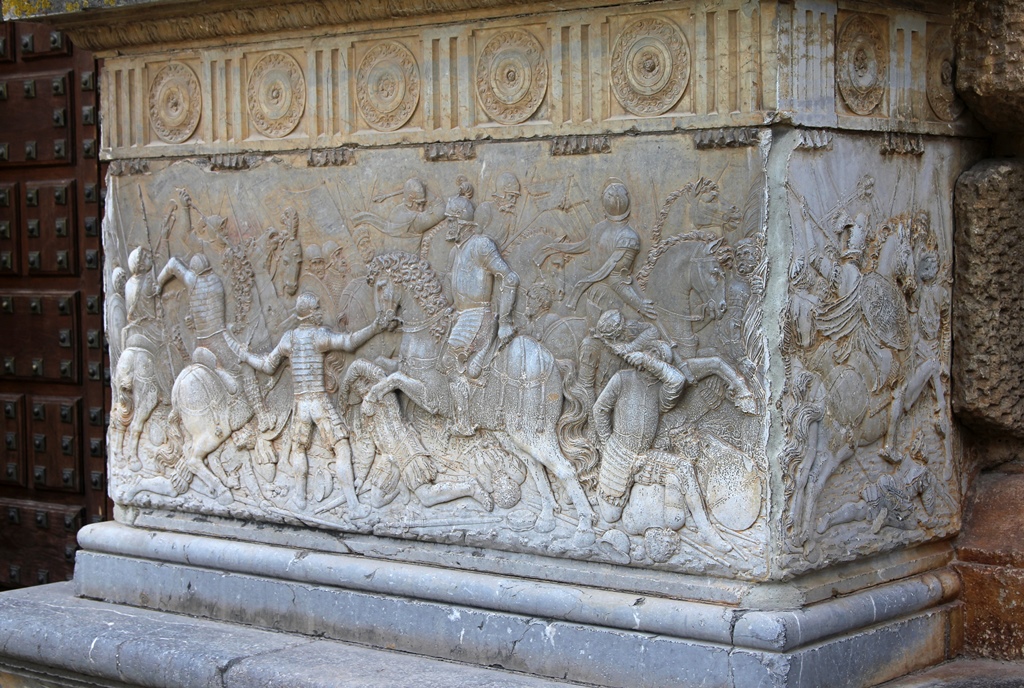
Battle Relief
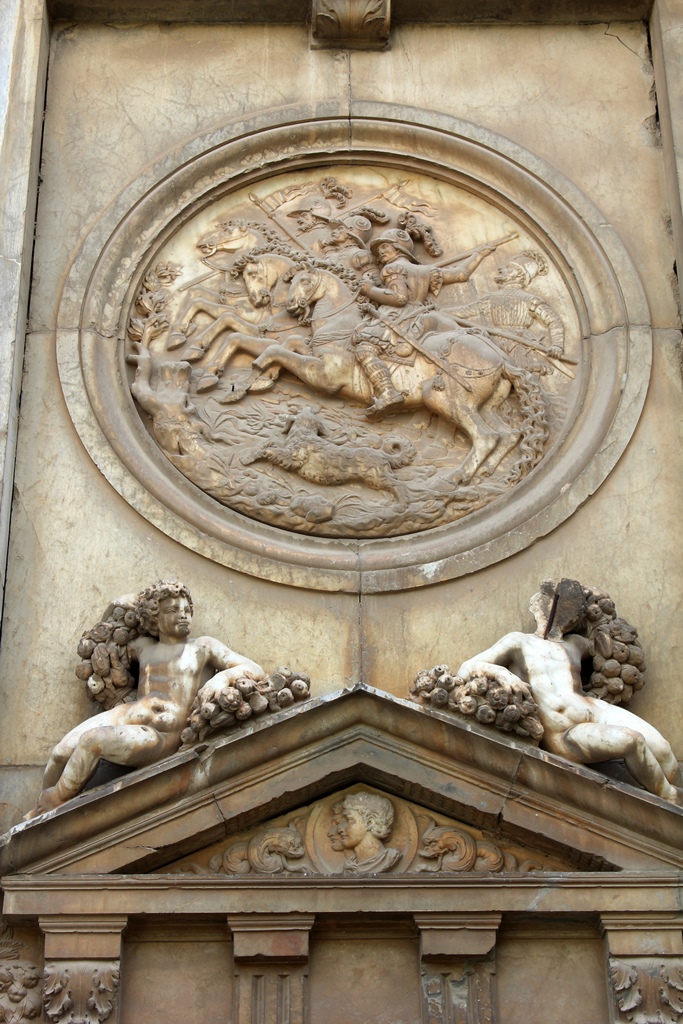
Battle of Pavia and Doorway Decorations
Courtyard, Palace of Charles V
Exiting through the Justice Gate, we walked back down the hill to the city. We found some
lunch, did some shopping and rested up a bit.
Walking Back Down Cuesta de Gomérez
Later in the afternoon, we stirred ourselves enough to get out and do some more exploring.
We decided to visit the neighborhood across from the Alhambra, a neighborhood called the
Albaicín.

